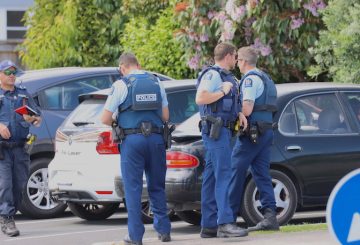Ang Komisyoner ng Pulisya ay umalis upang maging pinuno ng Social Investment Agency. Ang Ministro ng Pananalapi na si Nicola Willis ay may malakas na interes sa Ahensyang ito, na naglalayong tulungan ang mga mahina na tao sa lipunan. Una ang gobyerno ay nagbigay ng pondo para sa Ahensya, ngunit hindi pa rin malinaw ang mga pamamaraan at laki ng pondo.
Gumagamit ang Social Investment Agency ng data at katibayan upang makahanap ng mas mahusay na paraan upang suportahan ang mga nangangailangan, na nakikipagtulungan sa mga lokal na organisasyon sa halip na lamang sa pamah Naniniwala si Willis na ang diskarte na ito ay karaniwang kahulugan, na nagsasabi, “ang pag-iwas ay mas mahusay kaysa sa pagal Ang layunin ay upang matulungan ang mga mahina na tao sa mga maagang interbensyon, tulad ng edukasyon at suporta sa kalusugan, sa halip na umasa sa tulong ng gobyerno sa ibang pagkakataon.
Ang ideyang ito ng pamumuhunan sa lipunan ay unang itinaguyod ng dating Punong Ministro na si Bill English. Nakatuon siya sa mga istatistika na nagpapakita na ang maagang interbensyon ay maaaring mapabuti ang mga resulta para sa mga batang nasa panganib, na binabawasan ang Halimbawa, ang mga bata mula sa mga mahirap na tahanan ay madalas na mas malamang na makipaghihirap sa paaralan, umaasa sa mga benepisyo, o magtatapos sa bilangguan.
Binigyang-diin ni Willis na ang pamumuhunan sa lipunan ay hindi lamang tungkol sa paggastos ng mas maraming pera ngunit ang paggamit ng kasalukuyang pondo nang mas epektibo upang Nilalayon niyang lumikha ng isang pondo upang subukan ang mga bagong pamamaraan at mapabuti ang mga serbisyong pan Magsisimula ang pondong ito sa isang katamtamang halaga sa susunod na taon ngunit maaaring lumago sa paglipas ng panahon.
Plano rin ni Willis na mag-set up ng isang bagong pangkat ng tagapayo, ang Social Investment Board, upang magbigay ng puna at payo ngunit hindi upang lumikha ng mga patakaran. Ang Lupon ay magkakaroon ng anim hanggang walong miyembro, na binabayaran ayon sa mga alituntunin ng gobyerno.
Alam din ng gobyerno ang pangangailangan para sa responsableng paggamit ng data at naglalayong mapanatili ang tiwala sa publiko habang gumagamit ng data upang matulungan ang mga nangangailangan.
Si Andrew Coster, ang kasalukuyang Komisyoner ng Pulisya, ay gagawin ang Social Investment Agency sa lalong madaling panahon. Tinitingnan niya ang bagong papel na ito bilang isang pagkakataon na positibong makaapekto sa komunidad, na tinutugunan ang mga isyu bago ito lumalaki sa mas malaking problema. Habang hamon ang kanyang nakaraang relasyon sa ilang mga pulitiko, pinuri ng kasalukuyang pamahalaan ang kanyang gawain.
Sa pangkalahatan, nilalayon ng bagong Ahensya na mapabuti ang buhay sa pamamagitan ng nakatuon na pamumuhunan sa lipunan na nakikinabang





























































